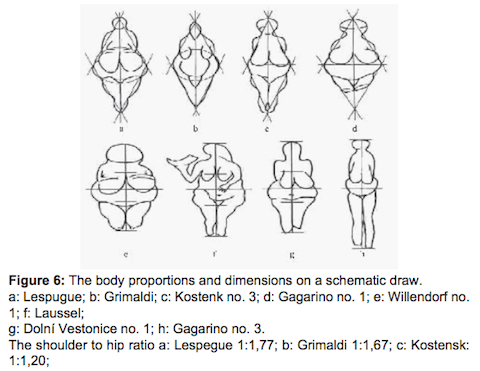
We’re all aware that standards of beauty shift over time, which is why there is such a vast difference between the body types of Peter Paul Rubens’ subjects and today’s Olive Oyl-ish fashion icons. How the taste pendulum swings seems largely tied to a basic law of economics: our species values things according to their rarity or abundance. A great example of this truism can be found in the apparent beauty ideals of our paleolithic ancestors, whose crude statues reveal that they were dazzled by curvaceous females. This recent study (PDF) of 97 female idols created tens of thousands of years ago breaks down the apparent infatuation:
Among the idols studied, 24 were skinny (mainly young ladies) and 15 normal weighed. All of these statues have small breasts, with the exception of two. More than half of the statuettes (51) are representing overweight or very obese females; their breasts mostly were also extremely large…
The association of fat to fertility has been widely discussed in anthropological literature. Through the Paleolithic Era there were frequent starvations, in fact the obesity was rare. As opposed to the sculptures where the skinny subjects are rare but the obesity is often seen. How can we solve this contradiction? I hypothetically would say, the obesity meant the ideal beauty, the prettiness, the desirable.
A slightly different take here, in which the authors contend that our statue-creating Paleolithic forebears were perhaps less interested in sex than in just surviving another godawful winter.


Like gas stations in rural Texas after 10 pm, comments are closed.